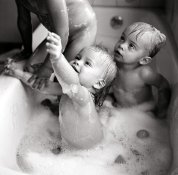wheelygirl
Member
Hello to one and all!
I'm going to add my $. 02.5 in: I agree that a novice/ beginner photographer such as I, doesn't necessarily need to purchase top-of-the-line camera! In fact, and I've posted about how my Minolta SRT-101 quite literally landed on my doorstep with a total 3 prime lenses!
The only expense I have 'put out' has been for film, a ball-head[for the tripod a fellow APUGer gave me!] and a camera bag. I have been severely blessed!!!
So, I share this with one & all to make a point: one never knows exactly what gifts might land on your door-step!!
I'm going to add my $. 02.5 in: I agree that a novice/ beginner photographer such as I, doesn't necessarily need to purchase top-of-the-line camera! In fact, and I've posted about how my Minolta SRT-101 quite literally landed on my doorstep with a total 3 prime lenses!
The only expense I have 'put out' has been for film, a ball-head[for the tripod a fellow APUGer gave me!] and a camera bag. I have been severely blessed!!!
So, I share this with one & all to make a point: one never knows exactly what gifts might land on your door-step!!





